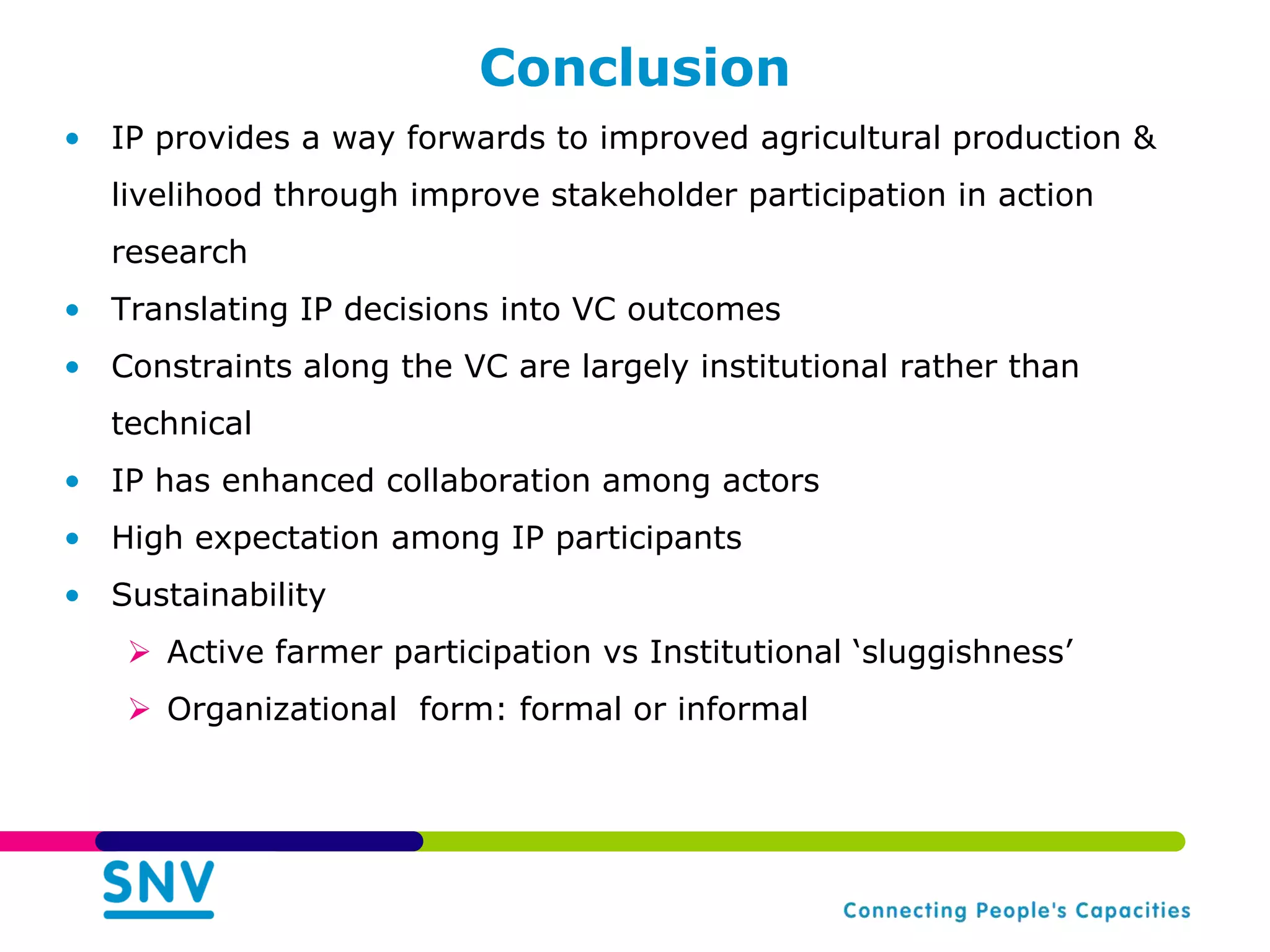This document discusses innovative platforms (IPs) and their role in supporting value chain development in Ghana and Burkina Faso. It provides an overview of IPs, comparing them to other multi-stakeholder platforms and outlining some of the challenges to implementing IPs. The document then discusses how action research can help position IPs within multi-stakeholder processes and ensure they facilitate dialogue, learning, and benefit for community stakeholders. Key questions are also posed around measuring IP performance and understanding how context influences their impact and outcomes.



















